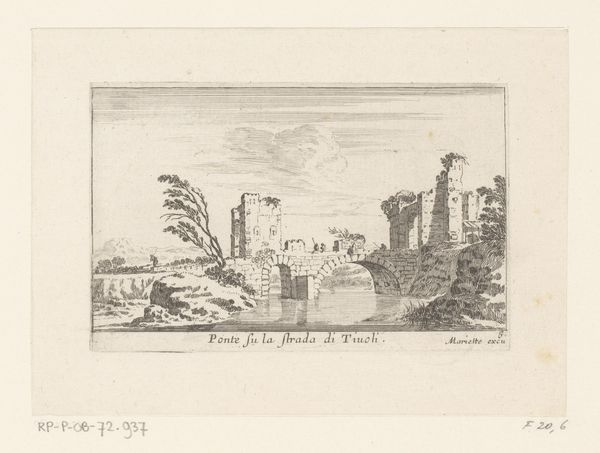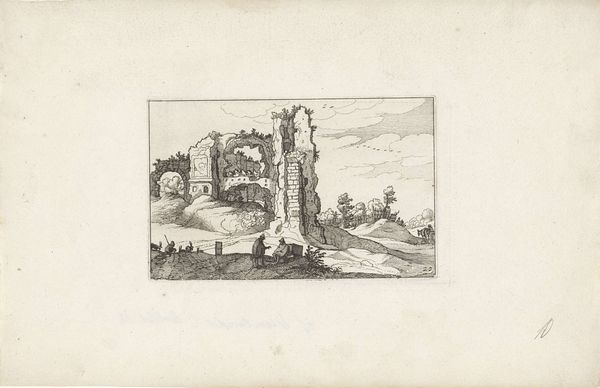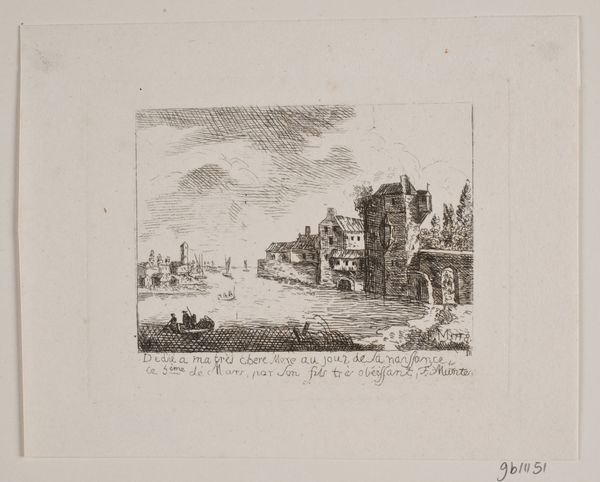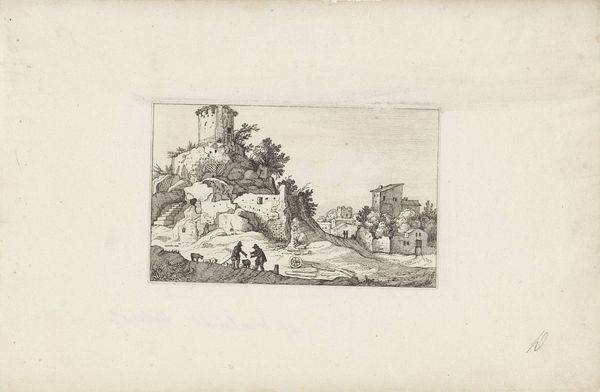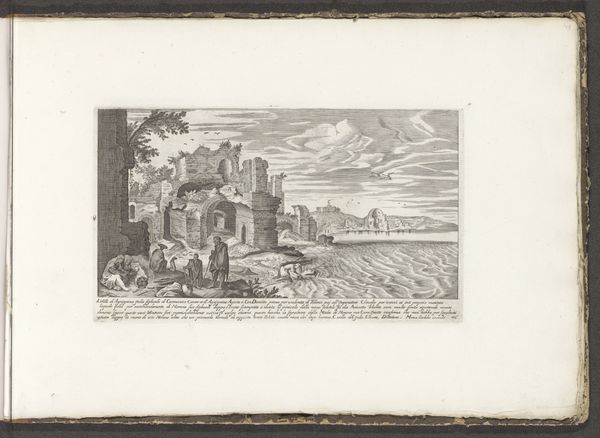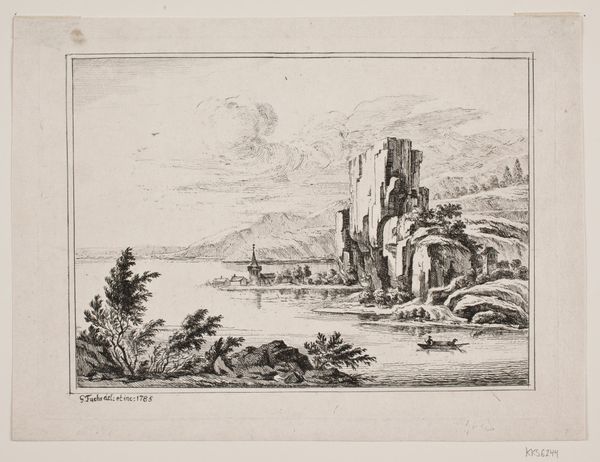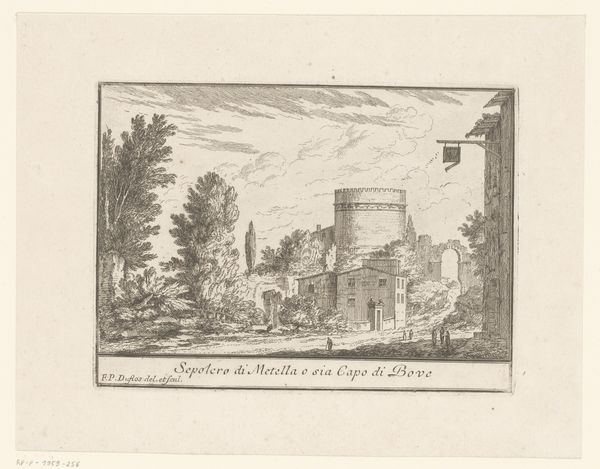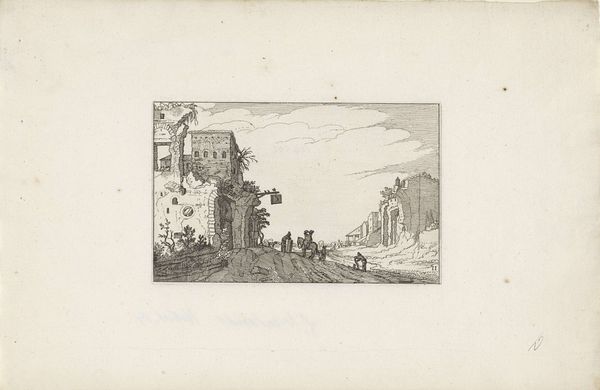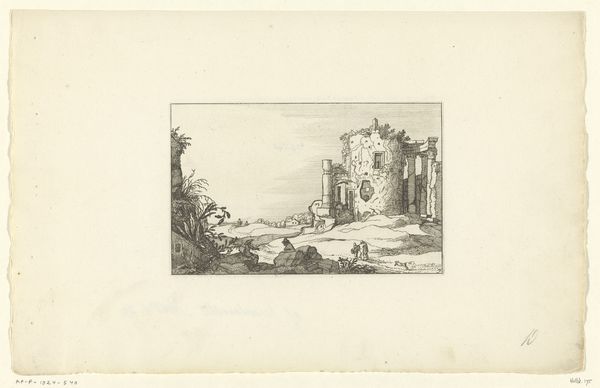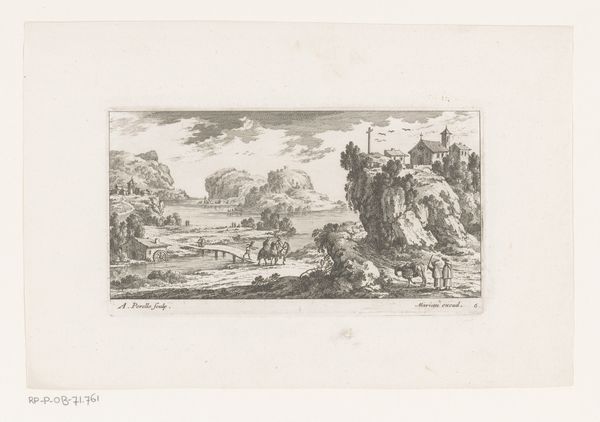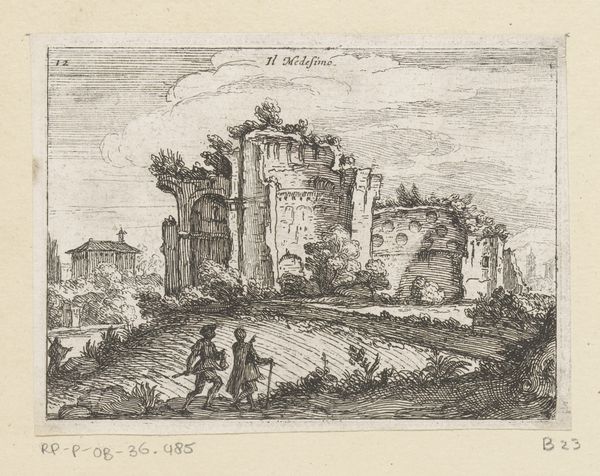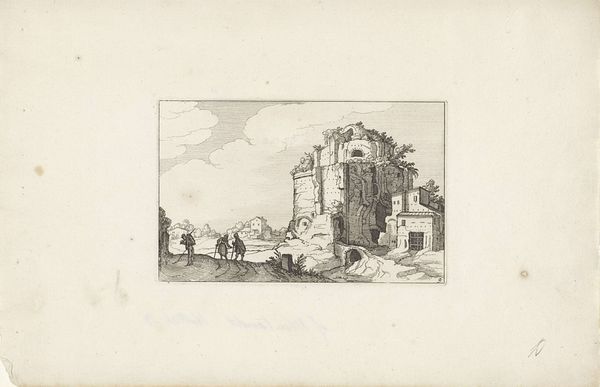
Gezicht op de Ponte Lucano en het mausoleum van Plautius 1636 - 1661
0:00
0:00
israelsilvestre
Rijksmuseum
print, etching, engraving
#
baroque
# print
#
etching
#
old engraving style
#
landscape
#
form
#
line
#
cityscape
#
engraving
#
realism
Dimensions: height 60 mm, width 114 mm
Copyright: Rijks Museum: Open Domain
Curator: Israel Silvestre's print, "View of the Ponte Lucano and the Mausoleum of Plautius," created between 1636 and 1661, immediately strikes me as desolate, even melancholic. The detailed lines carve out crumbling architecture against a vast sky, hinting at both grandeur and decay. Editor: Indeed. The etching and engraving medium truly emphasize the baroque era fascination with the sublime ruins of empire. Observe how the architecture is framed, and what formal meaning might we extract from it. Silvestre presents the ancient Roman monumentality as filtered through the lenses of both time and artistry. Curator: While I acknowledge the composition is quite brilliant, presenting a balance between nature and man's legacy, I find it hard to look past what isn't represented in the landscape. Silvestre's focus seemingly rests solely on elite structures, ignoring the lived experiences of those who would have been dominated by Roman society, building and living in its shadows. Editor: But isn't it precisely in that silence, in the carefully rendered forms of the Plautius mausoleum and the Ponte Lucano itself that Silvestre communicates? Look how light falls, tracing the delicate etchings. This highlights the enduring power that such architectural form possesses, seemingly impervious to human drama, capable of persisting through conflict or social inequities. Curator: The choice to foreground the architecture while minimising the human figure reinforces a hierarchy of importance typical of its time. While technically brilliant, and indicative of period tastes, the artwork perpetuates a historical narrative where marginalized perspectives simply become background noise. This noise, this quiet, demands attention in ways that the foreground does not. Editor: Well, on the whole, it prompts questions about cultural memory. What remnants from a powerful past, meticulously rendered, endure versus those elements relegated to silence. Silvestre, with those elegant lines, seems to offer a potent, yet troubling meditation.
Comments
No comments
Be the first to comment and join the conversation on the ultimate creative platform.
